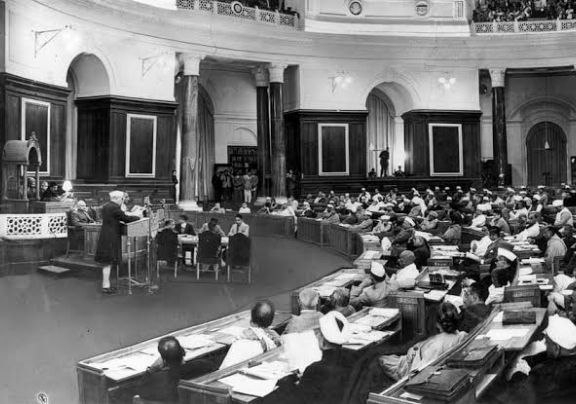LAXMIKANT POLITY NOTES PART 5
ENACTMENT OF THE CONSTITUTION
🔸Dr. B.R. Ambedkar introduced the final draft of the Constitution in the Assembly on November 4, 1948 (first reading).
🔸The Assembly had general discussion on it for five days (till November9, 1948).The second reading (clause by clause consideration) started on November 15, 1948, and ended on October 17, 1949.
🔸During this stage, as many as 7653 amendments were proposed and 2473 were actually discussed in theAssembly. The third reading of the draft started on November 14, 1949.
🔸Dr. B.R.Ambedkar moved motion -the Constitution as settled by the Assembly be passed’.
📌ENFORCEMENT OF THE CONSTITUTION
🔸Some provisions of the Constitution pertaining to citizenship, elections, provisional parliament, temporary and transitional provisions, and short title contained in Articles 5, 6, 7, 8, 9, 60, 324, 366, 367, 379, 380, 388, 391, 392 and 393 came into force on November 26, 1949, itself.
🔸The remaining provisions (the major part) of the Constitution came into force on January 26, 1950.
🔸 This day is referred to in the Constitution as the ‘date of its commencement’, and celebrated as the Republic Day.
📌EXPERTS COMMITTEE OF THE CONGRESS
🔸While elections to the Constituent Assembly were still in progress, on July 8, 1946, the Congress Party (Indian National Congress) appointed an Experts Committee for the purpose of preparing material for the Constituent Assembly.
🔸This committee consisted of the following 8 members :
1. Jawaharlal Nehru (Chairman)
2. M. Asaf Ali
3. K.M. Munshi
4. N. Gopalaswami Ayyangar
5. K.T. Shah
6. D.R. Gadgil
7. Humayun Kabir
8. K. Santhanam
📌CRITICISM OF THE CONSTITUENT ASSEMBLY
The critics have criticised the Constituent Assembly on various grounds.
These are as follows:
🔸Not a Representative Body:
The critics have argued that the Constituent Assembly was not a representative body as its members were not directly elected by the people ofIndia on the basis of universal adult franchise.
🔸 Not a Sovereign Body:
The critics maintained that the Constituent Assembly was not a sovereign body as it was created by the proposals of the British Government. Further, they said that the Assembly held its sessions with the permission of the British Government.
📌 SILENT FEATURES OF THE CONSTITUTION
🔸The Indian Constitution is unique in its contents and spirit. Though borrowed from almost every Constitution of the world, the Constitution of India has several salient features that distinguish it from the Constitutions of the other countries.
🔸 It should be noted at the outset that a number of original features of the Constitution (as adopted in 1949) have undergone a substantial change, on account of several amendments, particularly 7th, 42nd, 44th, 73rd, 74th, 97th and 101st Amendments.
📌LENGTHIEST WRITTEN CONSTITUTION
🔸Constitutions are classified into written, like the American Constitution, or unwritten, like the British Constitution. The Constitution of India is the lengthiest of all the written Constitutions of the world.
🔸It is a very comprehensive, elaborate
and detailed document.Originally (1949), the Constitution contained a Preamble, 395 Articles (divided into 22 Parts) and 8 Schedules. Presently (2019),it consists of a Preamble, about 470 Articles (divided into 25Parts) and 12 Schedules2
🔸The various amendments carried out
since 1951 have deleted about 20
Articles and one Part (VII) and added about 95 Articles, four Parts (IVA, IXA, IXB and XIVA) and four Schedules (9, 10, 11 and 12).
📌DRAWN FROM VARIOUS SOURCES
🔸The Constitution of India has borrowed most of its provisions from the Constitutions of various other countries as well as from the Government of India Act of 1935. Dr. B.R. Ambedkar proudly acclaimed that the Constitution of India has been framed after ‘ransacking all the known Constitutions of the World ’.
🔸The structural part of the Constitution is, to a large extent, derived from the Government of India Act of 1935.
🔸The philosophical part of the Constitution (the Fundamental Rights and the Directive Principles of State Policy) derive their inspirationfrom the American and Irish Constitutions, respectively.







